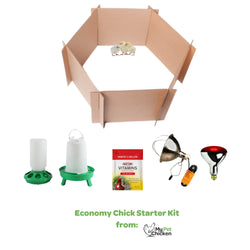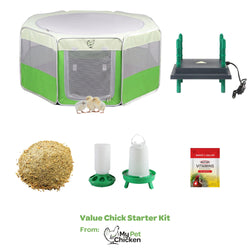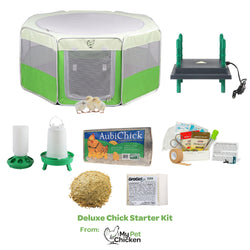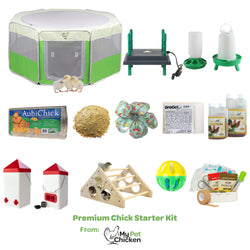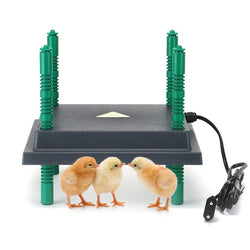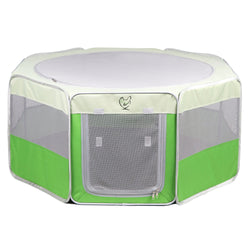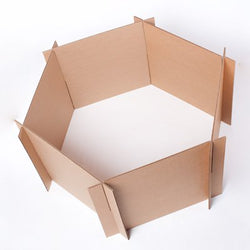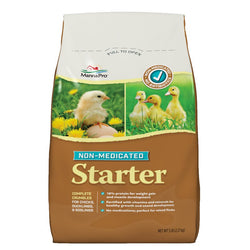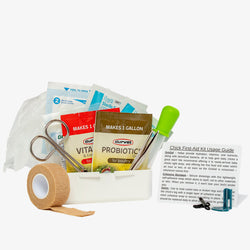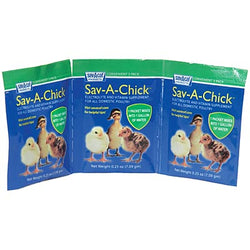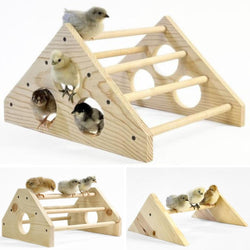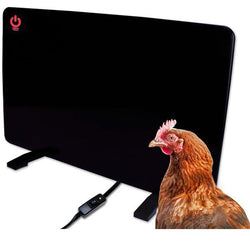Egg Yolk Peritonitis Overview
Back to blog
Egg Yolk Peritonitis Also called
Yolk peritonitis, yolk stroke, abdominal sepsis, abdominal septicemia
Prevalence-
Common, more common in broiler breeders
Signs
General signs -
The same signs associated with pain: lack of appetite, lethargy, huddling with fluffed up feathers. Occasional partial paralysis. Sudden death. Nesting behavior with no eggs produced.
Cardinal or diagnostic signs -
Distended abdomen, frequent multiple yolked eggs. (The occasional double yolker should seldom cause worry, especially in young hens.) Cessation in laying. Yellow-orange (yolk colored) droppings.
Cause/s -
This condition occurs when the hen matures too many egg folicles (yolks) at once, and is sometimes the result of a condition known as EODES (erratic oviposition and defective egg syndrome). With this illness, the yolks inside the hens body become infected, often with e coli bacteria. The yolks may be deposited internally instead of within an egg, and when the hen's body tries to reabsorb them, the peritoneum can become infected, as egg yolk is a good medium for bacteria to grow. This problem can occur when young hens or pullets are exposed to stress and too much light too early in their maturation, typically in a factory farm setting� although it can occur in home flocks that crowd too many hens together in a small space and use light to encourage early laying. We wonder if northern climates, where summer days are very long and flocks spend more time indoors, see a higher incidence, too? Thus far we have seen no studies on the issue.
Communicability -
Yolk peritonitis is not contagious, but the underlying issues will be common to your flock and can mean it occurs in more than one hen in your flock at once.
Communicability to humans -
No. However, the underlying infection can be communicated as food poisoning if you don�t handle and cook eggs (or meat) produced by your flock correctly.
Incubation period -
N/A
Latent
No. birds do not become carriers� however the bacteria causing the infection may be elevated in your environment and/or cause other infections.
Endemic
This can happen in any environment, but is more common in factory farms and in flocks where the birds are highly stressed, exposed to too much artificial light at a young age, and are crowded too closely together in an unsanitary environment..
Home treatment and/or prevention -
Prevention: Avoid adding light to the coop at all� but at least until young birds have been laying for a month or two. Give your hens plenty of clean space and practice good biosecurity.
Treatment: There is no real home treatment for this... however, if you are using light in the coop, cease. A vet will need to diagnose your bird and prescribe antibiotics or other appropriate treatment.
Veterinary care - Your vet can diagnose and sometimes offer treatment (antibiotics) when the problem is caught early. If the problem is caused by internal laying, surgery may be necessary.
Recovery - Recovery is possible, but depends on the extent of the infection. Your veterinarian will be able to offer an informed prognosis.
Other conditions, illnesses and/or diseases with similar signs:
Pasteurella (fowl cholera) or Salmonella
Also consider browsing through this list of other chicken illnesses with neurological symptoms.
Yolk peritonitis, yolk stroke, abdominal sepsis, abdominal septicemia
Prevalence-
Common, more common in broiler breeders
Signs
General signs -
The same signs associated with pain: lack of appetite, lethargy, huddling with fluffed up feathers. Occasional partial paralysis. Sudden death. Nesting behavior with no eggs produced.
Cardinal or diagnostic signs -
Distended abdomen, frequent multiple yolked eggs. (The occasional double yolker should seldom cause worry, especially in young hens.) Cessation in laying. Yellow-orange (yolk colored) droppings.
Cause/s -
This condition occurs when the hen matures too many egg folicles (yolks) at once, and is sometimes the result of a condition known as EODES (erratic oviposition and defective egg syndrome). With this illness, the yolks inside the hens body become infected, often with e coli bacteria. The yolks may be deposited internally instead of within an egg, and when the hen's body tries to reabsorb them, the peritoneum can become infected, as egg yolk is a good medium for bacteria to grow. This problem can occur when young hens or pullets are exposed to stress and too much light too early in their maturation, typically in a factory farm setting� although it can occur in home flocks that crowd too many hens together in a small space and use light to encourage early laying. We wonder if northern climates, where summer days are very long and flocks spend more time indoors, see a higher incidence, too? Thus far we have seen no studies on the issue.
Communicability -
Yolk peritonitis is not contagious, but the underlying issues will be common to your flock and can mean it occurs in more than one hen in your flock at once.
Communicability to humans -
No. However, the underlying infection can be communicated as food poisoning if you don�t handle and cook eggs (or meat) produced by your flock correctly.
Incubation period -
N/A
Latent
No. birds do not become carriers� however the bacteria causing the infection may be elevated in your environment and/or cause other infections.
Endemic
This can happen in any environment, but is more common in factory farms and in flocks where the birds are highly stressed, exposed to too much artificial light at a young age, and are crowded too closely together in an unsanitary environment..
Home treatment and/or prevention -
Prevention: Avoid adding light to the coop at all� but at least until young birds have been laying for a month or two. Give your hens plenty of clean space and practice good biosecurity.
Treatment: There is no real home treatment for this... however, if you are using light in the coop, cease. A vet will need to diagnose your bird and prescribe antibiotics or other appropriate treatment.
Veterinary care - Your vet can diagnose and sometimes offer treatment (antibiotics) when the problem is caught early. If the problem is caused by internal laying, surgery may be necessary.
Recovery - Recovery is possible, but depends on the extent of the infection. Your veterinarian will be able to offer an informed prognosis.
Other conditions, illnesses and/or diseases with similar signs:
Pasteurella (fowl cholera) or Salmonella
Also consider browsing through this list of other chicken illnesses with neurological symptoms.
